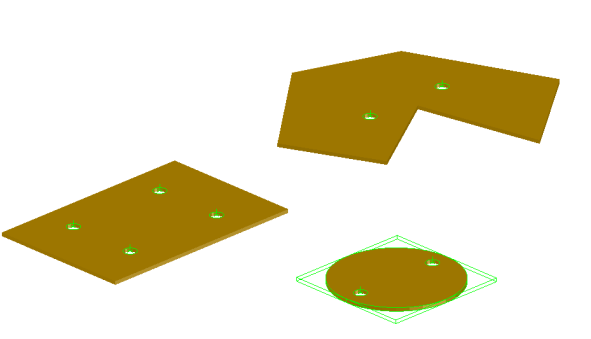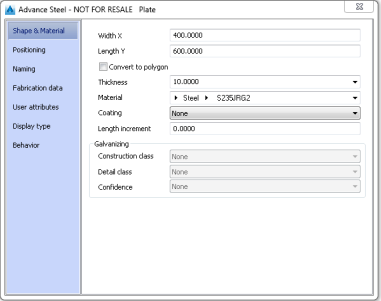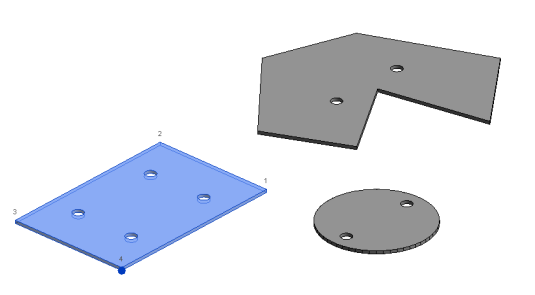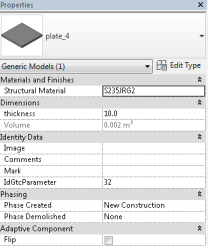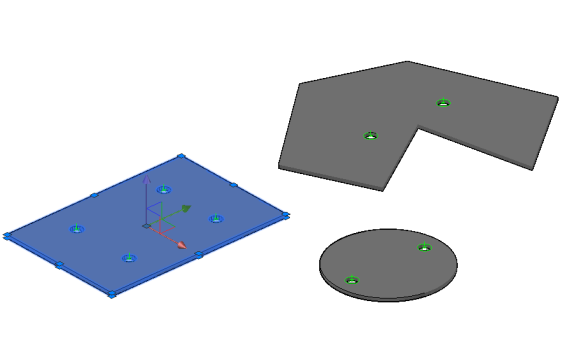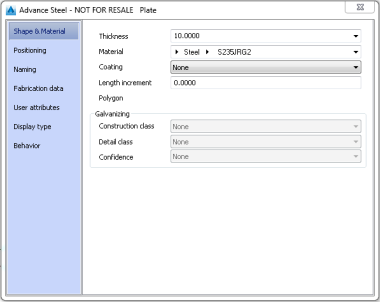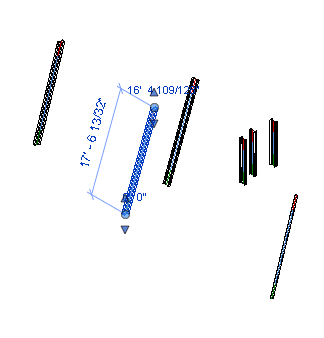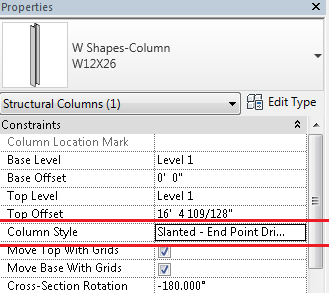Use the Advance Steel Revit Extension to transfer numerous elements between Revit and Advance Steel, such as levels, steel beams, plates, wood, concrete elements, grating, some connection elements and some beam and plate features.
Advance Steel is designed for Structural Engineers and Steel Detailers, who need an easy-to-use steel detailing application. Advance Steel offers dedicated modeling and detailing options that help the user increase productivity during project creation, by saving time through the automatic processes of detailing and documentation (BOMs).
The main purpose of the Advance Steel Revit Extension is to import the structural model (beams, columns, plates, structural concrete elements) from other software into Advance Steel in order to automatically generate fabrication data.
Transferred File Formats
The .smlx (Steel markup language) format is the main format used by the extension, but other supported formats also include IFC, CIS/2, PSS, SDNF.
Transferred Elements (.smlx)
You can transfer numerous elements from/to Revit to/from Advance Steel, such as levels, steel beams, plates, wood, concrete elements, grating, some connection elements, some beam features and some plate features. All element transfers are dependent on the feature extent and limitations of each application (Revit and Advance Steel). For more detailed information on transferred elements see the table below:
| CLASS | OBJECT TYPE | REVIT TO ADVANCE STEEL | ADVANCE STEEL TO REVIT |
|---|---|---|---|
| General | Level |

|

|
| Grid |

|

|
|
| Steel Beams | Beam |

|

|
| Column |

|

|
|
| Compound beam | X |

|
|
| Welded beam | X |

|
|
| Tapered beam | N/A |

|
|
| Curved beam |

|

|
|
| Poly beam | N/A |

|
|
| Folded beam | N/A | X | |
| Aluminum beam | X |

|
|
| Plates | Rectangular plate |
 (AS-Revit-AS)
(AS-Revit-AS)
|

|
| Polygonal plate |
 (AS-Revit-AS)
(AS-Revit-AS)
|

|
|
| Circular plate |
 (AS-Revit-AS)
(AS-Revit-AS)
|

|
|
| Folded plate | N/A |

|
|
| Twisted folded plate | N/A |

|
|
| Conical folded plate | N/A |

|
|
| Wood | Timber beam |

|

|
| Concrete elements | Wall |

|

|
| Polygonal wall |

|

|
|
| Slab |

|

|
|
| Polygonal Slab |

|

|
|
| Concrete beam |

|

|
|
| Concrete curved beam |

|

|
|
| Concrete column |

|

|
|
| Isolated footing |

|

|
|
| Continuous footing |

|

|
|
| Grating | Standard grating | N/A |

|
| Bar grating | N/A |

|
|
| Variable grating, rectangular | N/A |

|
|
| Variable grating, polygonal | N/A |

|
|
| Connection elements | Bolts | X | X |
| Anchors | X | X | |
| Shear Studs | X | X | |
| Welds | N/A | X | |
| Holes |
 (AS-Revit-AS)
(AS-Revit-AS)
|
 (only on plates)
(only on plates)
|
|
| Beam features | Shorten |

|
X |
| Contour |

|
X | |
| Cope | N/A | X | |
| Weld preparation | N/A | X | |
| Corner cut | N/A | X | |
| Cope (from Revit) |
 (only shorten)
(only shorten)
|
N/A | |
| Plate features | Shorten | N/A |

|
| Contour | N/A |
 (only polygonal)
(only polygonal)
|
|
| Weld preparation | N/A | X | |
| Corner cut | N/A |

|
|
| Structural analysis results | Torsor (N,V,M) |

|
X |
| Legend: | |
|---|---|

|
Present in the source application, is imported in the target application (limitation). |
| X | Present in the source application, is NOT imported in the target application. |
| N/A | NOT available in the source application. |
 (AS-Revit-AS)
(AS-Revit-AS)
|
Transfer from Advance Steel to Revit and back to Advance Steel. |
Plates
Advance Steel plates are imported in Revit as plate families.
In order to import plates in Revit, you need to perform the following in the Settings menu:
- Check the Import plates option.
- Uncheck the Import only structural elements (e.g. beams, columns, bracings,...) option.
These plates are imported back in Advance Steel as plate objects.
The images below display a model in Advance Steel that contains a rectangular, polygonal and circular plate. The model was transferred to Revit and then was sent back to Advance Steel through .smlx. The plates are imported in Advance Steel as plate objects.
| Advance Steel Model |
|
| Revit Model |
|
| Advance Steel Model (imported through .smlx) |
|
Beams
Beams (straight or curved) are transferred between Revit and Advance Steel. In Revit this objects are imported as structural beams. In Advance Steel they are imported as beams.
The start and end point positions are preserved.
The images below display a beam transfer from Advance Steel to Revit.
| Advance Steel | Revit |
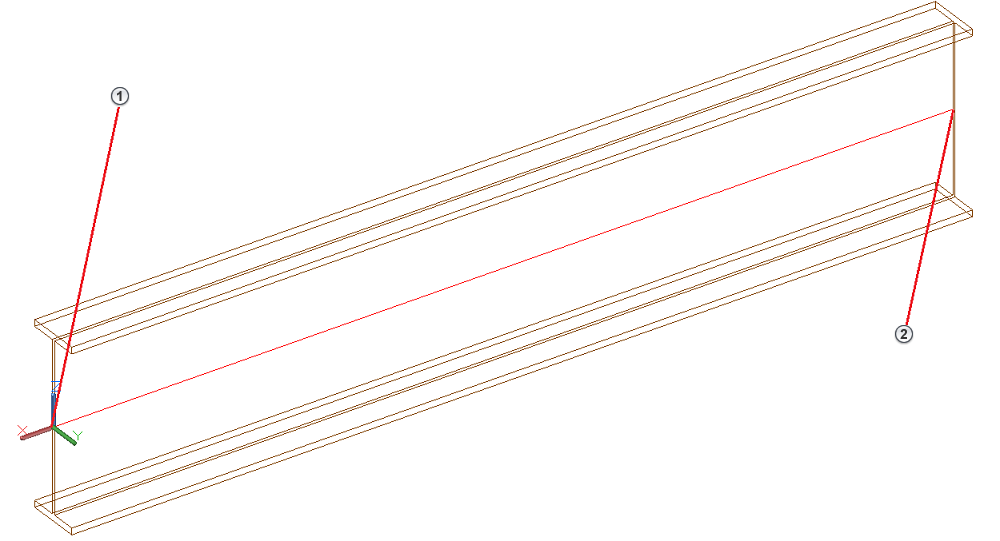
|
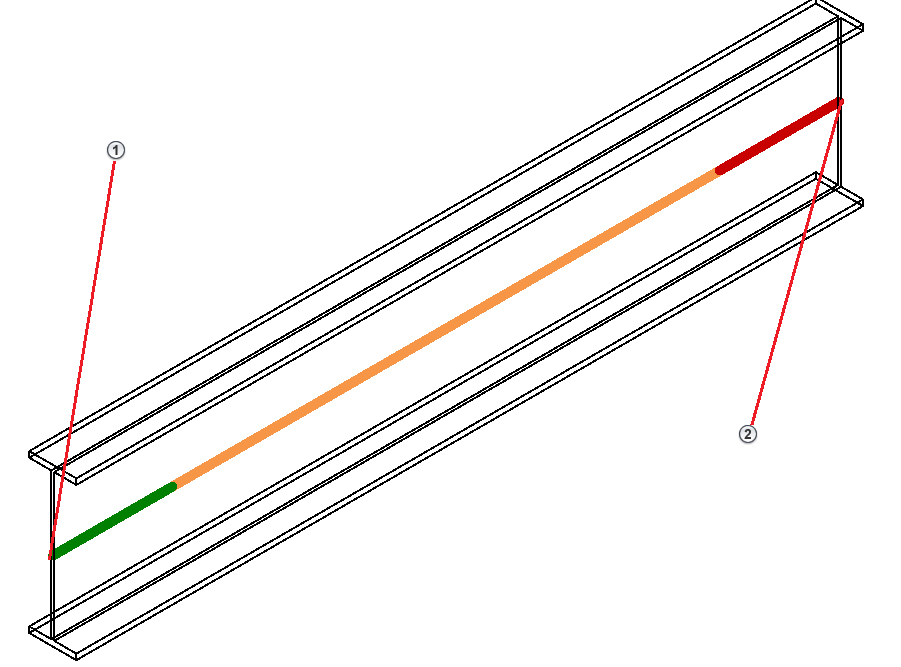
|
 - Start point
- Start point
 - End point
- End point
Columns
Columns are transferred in Revit as structural columns, Slanted - End Point Driven, regardless of the angle in the Advance Steel model. In Advance Steel they are imported as columns and have the model role set to Column.
The images below display a model in Advance Steel that contains several slanted and vertical columns. The model was transferred to Revit, where the columns were imported with the Slanted - End Point Driven column style.
| Advance Steel | Revit |
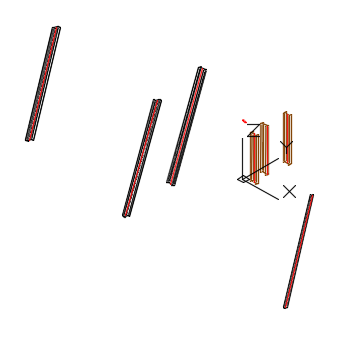 |
|
